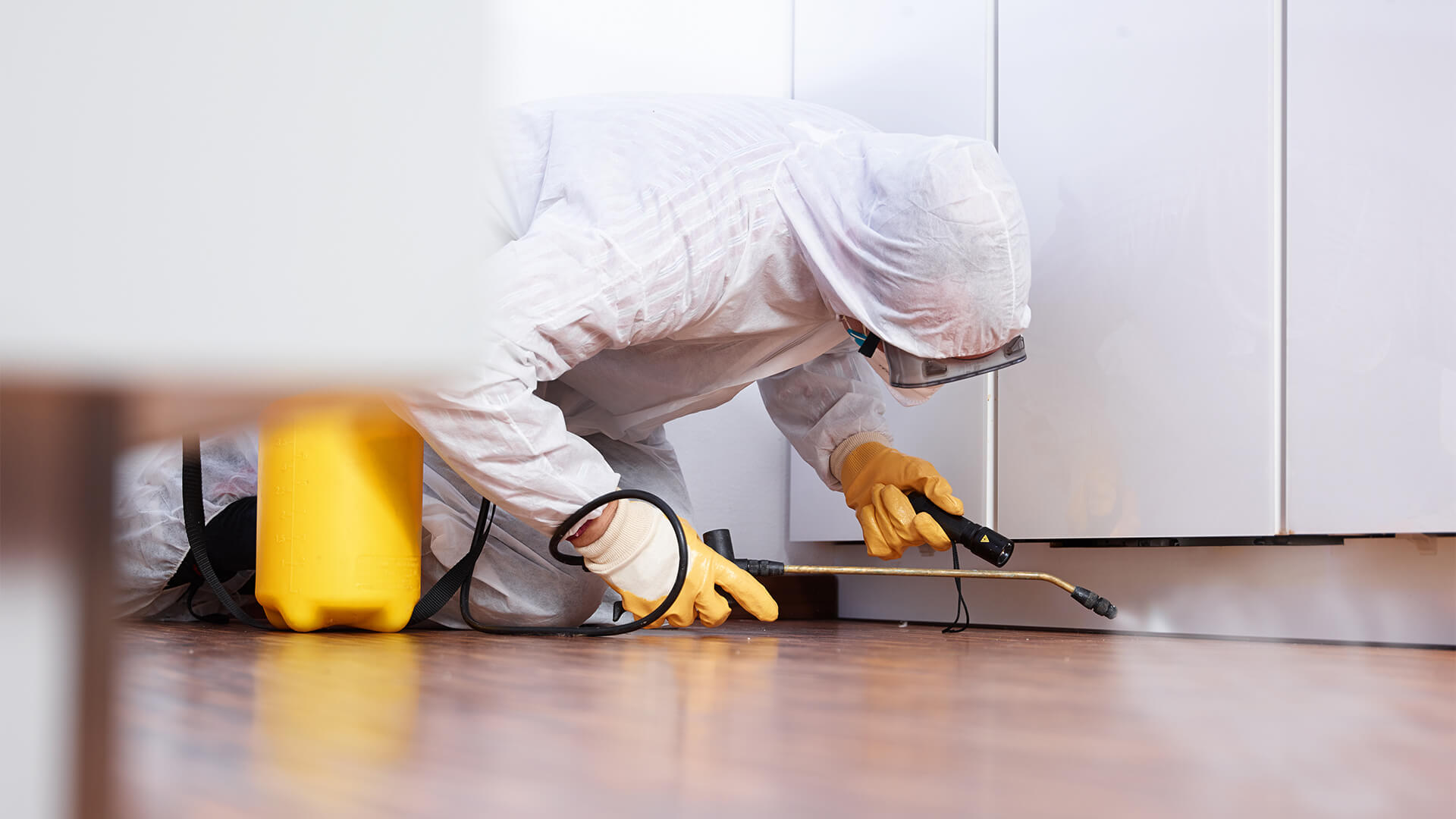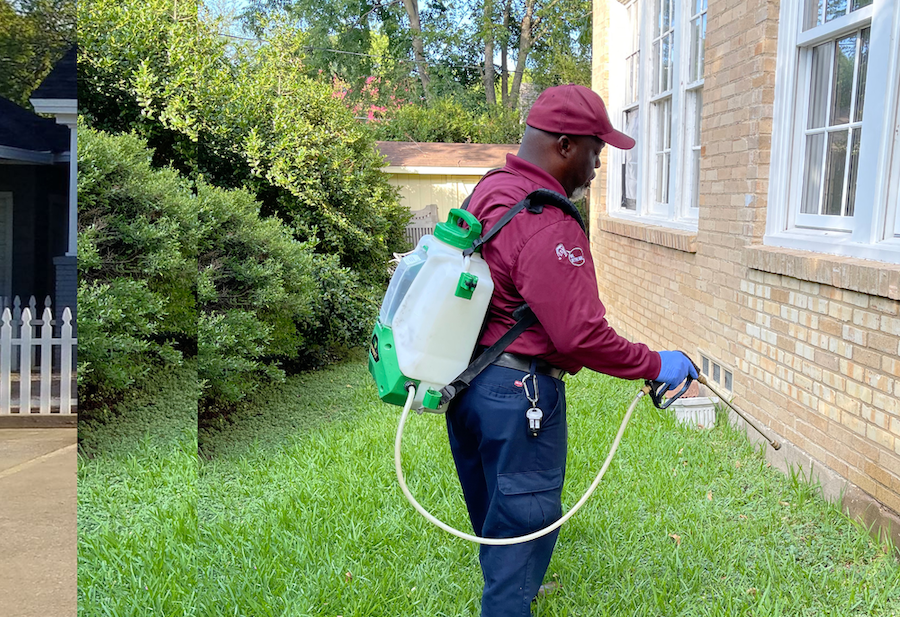Reliable A1 Bed Bug Exterminator Charlotte - Get Rid of Bed Bugs Rapid
Reliable A1 Bed Bug Exterminator Charlotte - Get Rid of Bed Bugs Rapid
Blog Article
Bed Bug Treatment Breakdown: Contrasting Chemical Vs. Non-Chemical Solutions
In the realm of bug control, especially when handling the persistent concern of bed insects, the selection between chemical and non-chemical treatment services can be a crucial one. Both strategies offer distinct benefits and drawbacks, influencing factors such as performance, security considerations, and general price. By taking a look at the nuanced information of each method, a more clear understanding of which course to pursue in resolving a bed insect problem can be attained.
Performance of Chemical Treatments
Chemical therapies for bed insect invasions have been extensively acknowledged for their fast and powerful effectiveness in eradicating these pests. When thinking about the performance of chemical therapies, it is important to comprehend that they can give a extensive and fast service to a bed insect trouble. Specialist pest control men typically count on insecticides to target bed pests at different stages of their life cycle, consisting of adults, fairies, and eggs. These chemicals normally work by interrupting the bed bugs' anxious system, causing paralysis and eventual fatality.
Additionally, chemical therapies have the benefit of supplying residual impacts, suggesting that they can remain to eliminate bed bugs even after the first application. This recurring action is specifically helpful in combating any type of potential re-infestations. In addition, the rapid action of chemical therapies can bring alleviation to individuals facing severe bed insect invasions, allowing them to reclaim control of their space quickly.
Security Worries With Chemical Solutions
One critical element that needs mindful factor to consider when making use of chemical options for bed insect treatment is making sure the safety of occupants and the setting. While chemical treatments can be effective in getting rid of bed insects, they may position dangers otherwise handled properly. Among the key safety and security interest in chemical remedies is the possible damage they can trigger to human health and wellness. Exposure to certain chemicals utilized in bed pest treatments can cause breathing problems, skin irritation, or various other unfavorable responses, specifically in people with pre-existing problems or level of sensitivities. Additionally, improper application or dose of chemical pesticides can result in toxic residues remaining in the cured area, positioning long-lasting wellness risks to passengers.
Furthermore, the ecological influence of chemical services is an additional considerable factor to consider. Some pesticides utilized in bed insect therapies might be hazardous to useful pests, wildlife, and environments if they seep right into the dirt or water systems. It is vital to make use of chemical treatments sensibly, following safety standards, and thinking about less harmful options to mitigate these dangers and guarantee the risk-free and efficient management of bed bug infestations.
Benefits of Non-Chemical Strategies
Thinking about the possible safety and security concerns and ecological effect linked with chemical options for bed bug therapy, exploring non-chemical strategies provides a promising option with a number of distinct advantages. Non-chemical techniques supply a more secure choice for houses, specifically those with kids, pest control ca pets, or people delicate to extreme chemicals. These strategies get rid of the threats of exposure to harmful substances, reducing the potential for damaging wellness impacts. Moreover, non-chemical treatments are eco-friendly, as they do not add to air or water contamination, making them a sustainable choice for parasite control.
Furthermore, non-chemical remedies can be efficient in targeting bed insects, consisting of hard-to-reach locations where chemical treatments might not permeate. Techniques such as warmth treatment, vacuuming, vapor cleaning, and bed mattress coverings offer thorough elimination without making use of damaging chemicals. Furthermore, non-chemical methods can be less disruptive, needing very little prep work and enabling quicker reentry right into dealt with areas. Generally, going with non-chemical bed pest therapy techniques not only focuses on safety and security and ecological defense yet likewise makes certain effective and comprehensive parasite control.
Limitations of Non-Chemical Treatments

Additionally, non-chemical treatments typically need numerous applications to attain effective removal. This can be time-consuming and might not constantly assure full removal of all bed pests and their eggs, particularly in hard-to-reach or surprise areas.
In addition, the success of non-chemical treatments greatly counts on proper application and thoroughness, which can be challenging for people without expert knowledge. Inadequate application of non-chemical techniques may result in incomplete eradication, resulting in consistent problems and the need for additional therapies.
Consequently, while non-chemical treatments have their benefits, it is crucial to recognize these restrictions and consider them when establishing the most efficient approach for handling bed insect infestations.
Cost Comparison: Chemical Vs. Non-Chemical Options
Given the constraints connected with non-chemical treatments, an important aspect to review in the context of bed bug management is the cost contrast between chemical and non-chemical alternatives. In comparison, non-chemical treatments like warmth treatment or steam can be much more costly, with prices ranging from $1,000 to $6,000 for a whole home. While the initial expense of chemical therapies may seem reduced, multiple therapies might be needed browse around this web-site to totally remove the invasion, potentially raising the overall expense.
Conclusion

Taking into consideration the prospective safety concerns and environmental effect associated with chemical solutions for bed bug treatment, exploring non-chemical methods provides an encouraging option with a number of unique benefits.Provided the limitations associated with non-chemical therapies, a necessary element to examine in the context of bed pest administration is the expense contrast between chemical and non-chemical choices. In contrast, non-chemical therapies like warmth treatment or heavy steam can be much more expensive, with prices ranging from $1,000 to $6,000 for a whole home. While the initial expense of chemical treatments might appear reduced, several therapies may be needed to completely eliminate the problem, potentially increasing the general price.In final thought, when contrasting chemical and non-chemical bed bug treatment options, it is necessary to take into consideration efficiency, safety and security, benefits, constraints, and price.
Report this page